
Growing a Fuchsia in a pot
For abundant bellflowers
Contents
The Fuchsia is a perennial that is adorned with numerous highly graphic, bell-shaped, pendulous flowers. It is valued for its long and generous summer flowering, from late May until the first frosts. With a stemmed, bushy, semi-trailing, or trailing habit, the Fuchsia bears solid or bicoloured flowers that contrast with bright green, golden, or variegated foliage. Allow yourself to be charmed by shades as diverse as white, pink, purple, red, or burgundy. A plant for balconies, terraces, verandas, or greenhouses, the non-hardy Fuchsia will have a majestic appearance in a pot. Discover the key points to know for successfully growing Fuchsias in pots?
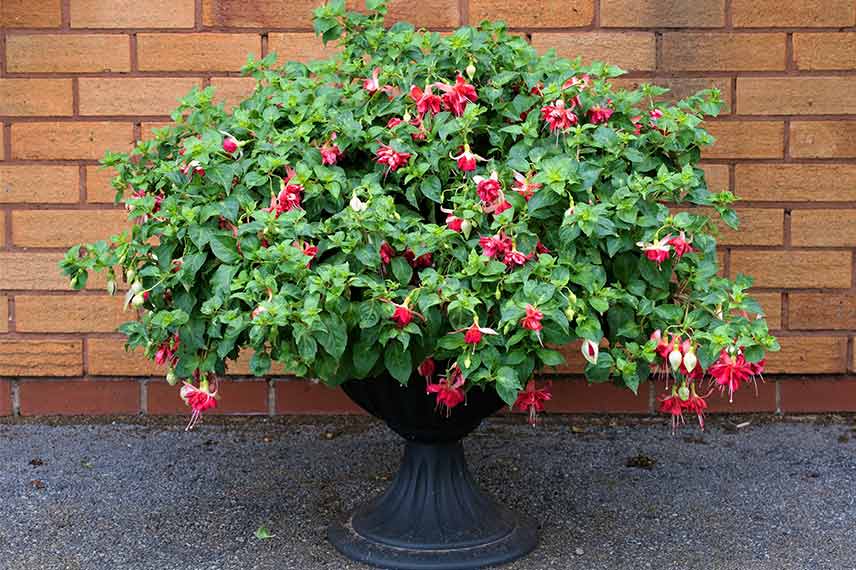
Fuchsia pot (© Peter, Adobe Stock)
What type of pot to choose?
Choose a pot with a diameter between 30 and 60 cm, with drainage holes in the bottom. This will allow excess water to drain away and prevent the roots from rotting. Be aware that Fuchsia will also thrive in a trough, window box, hanging basket, or suspension with suitable varieties such as ‘Bella Laura’, ‘Voodoo’, ‘Dark Eyes’ or ‘Annabel’. Height is not a concern as Fuchsia does not have a very deep root system. The material is also not an issue. Terracotta, plastic or resin can be used, keeping in mind that watering will be more frequent in a terracotta pot, which is porous. Potted Fuchsias will look stunning on a balcony, a windowsill, or a terrace.
→ Discover our article on Fuchsia: the most beautiful varieties for hanging
Which substrate to choose?
Fuchsia requires rich but consistently moist, well-drained soil to produce abundant flowering. Choose a potting mix specifically for flowering plants, or create a blend of garden soil and potting mix in equal parts. At the bottom of the pot, place a layer of gravel, pebbles, or clay balls to create a drainage layer, then fill with the potting mix.
Discover other Perennial Fuchsia
View all →Available in 1 sizes
Available in 2 sizes
Available in 1 sizes
Available in 1 sizes
Available in 2 sizes
Available in 2 sizes
Available in 2 sizes
Available in 1 sizes
Available in 1 sizes
Available in 1 sizes
When and how to plant a Fuchsia in a pot?
Fuchsia comes in dozens of very floriferous varieties, each offering different shapes and colours.
When to plant a Fuchsia in a pot?
The flowering of Fuchsias continues from late spring until autumn. Prefer a spring planting, from March to May, to install Fuchsias in pots so you can quickly enjoy their flowering. May remains ideal as the last spring frosts have passed. Before this, bring the pots indoors at night to protect them.
How to plant a Fuchsia in a pot?
Here are the steps to successfully plant a Fuchsia in a pot:
- Soak the root ball in a container of water;
- Check for drainage holes at the bottom of the pot;
- Place a layer of gravel, pebbles, clay balls, or pumice to a height of 2 cm;
- Cover this layer with enriched potting soil for flowering plants;
- Place the root ball in the centre and fill the gaps with potting soil;
- Firmly pack all around;
- Water generously.
Once the Fuchsia is planted, place the pot in a location with light shade. Avoid total shade, which can hinder flower formation, and direct sunlight in summer, which can cause burns on the plant.
Read also
Fuchsia: how to overwinter?How to water a Fuchsia in a pot?
As with all potted plants, Fuchsia requires regular watering as the soil tends to dry out more quickly in containers. Touch the surface of the potting mix and provide water as soon as you feel it is dry within the top 2 centimetres. During the summer months, watering will be daily, ensuring to remove any excess water from the saucer and always checking that the soil is not waterlogged, or you risk the roots rotting.
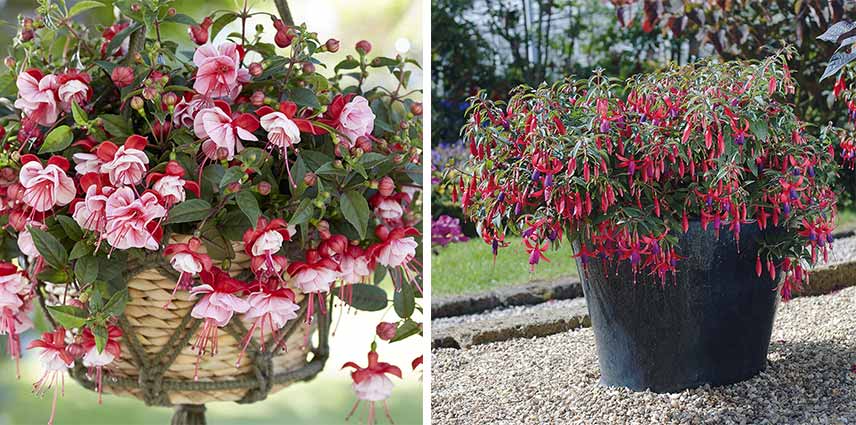
Always keep the soil fresh for a potted Fuchsia
How to care for a potted Fuchsia?
Throughout the flowering period, remove faded flowers and yellowing leaves to maintain the plant’s aesthetics and encourage the formation of new flowers. Pinch back some young shoots to promote branching and stimulate the growth of even more new shoots. Apply a liquid fertiliser specifically for flowering plants or geraniums once a month to support flowering.
In October or November, cut all the stems back to the pot and bring it indoors to a cool, bright room. If winters are not too harsh, simply place a protective cover over it and store the pot against a wall or railing. In most regions, you will need to protect potted Fuchsias as they are sensitive to cold and frost in winter, and are considered annual plants. A few exceptions, such as the varieties ‘Mme Cornelissen’, ‘Blue Sarah’, and ‘Marjory Black’ can withstand temperatures down to -10°C, and hardy bush Fuchsias like magellanica var. milonae or magellanica var. gracilis can resist temperatures down to -15°C (in the ground!).
From October onwards, try placing non-hardy Fuchsias in a frost-free room, between 5 and 10°C, with plenty of light, such as a greenhouse or conservatory, to enjoy them for longer. Reduce watering significantly. Prune back half the length of the stems and remove any dry leaves.
Before taking them out onto the balcony or terrace in early spring, prune any damaged or dry parts again and take the opportunity to repot them in fresh, rich compost. Keep only the strong, green stems. Gradually resume watering and fertilising as the days go by.
Find our guide on how to overwinter Fuchsia.
For further reading
- Follow our growing tips to succeed with Fuchsias.
- Discover all our Fuchsias annuals and hardy varieties.
- To make the right choice of plants, we advise you to plant appropriately; feel free to adopt our Plantfit web application!
- Subscribe!
- Contents
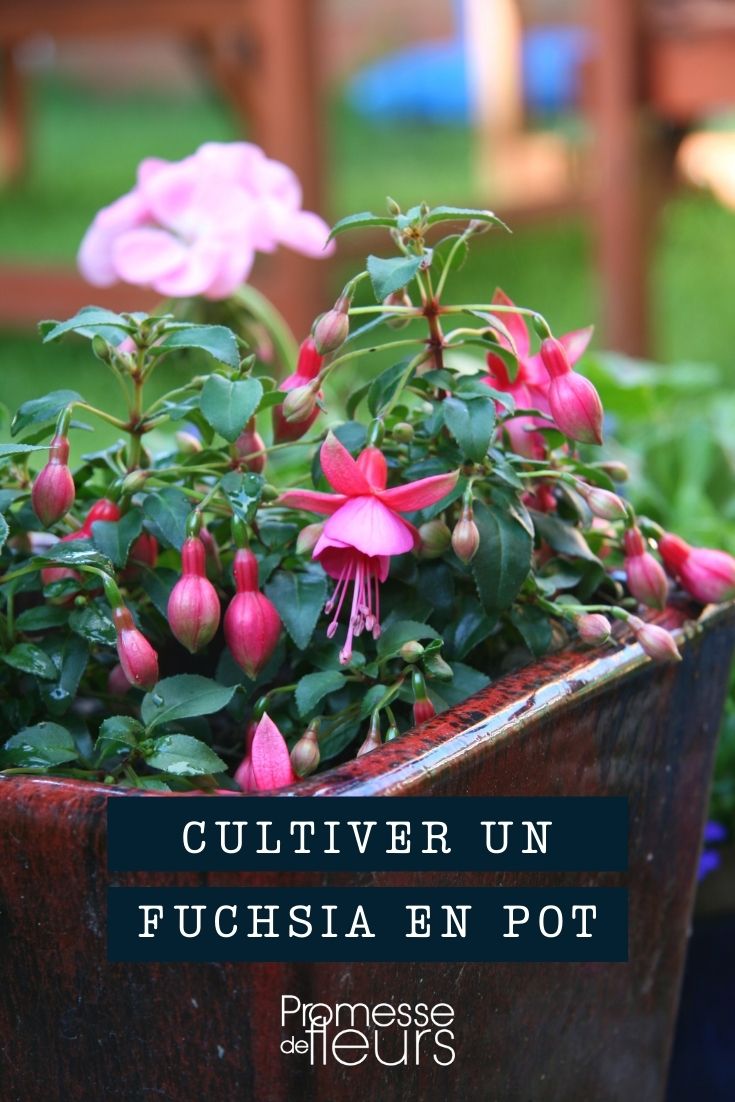


































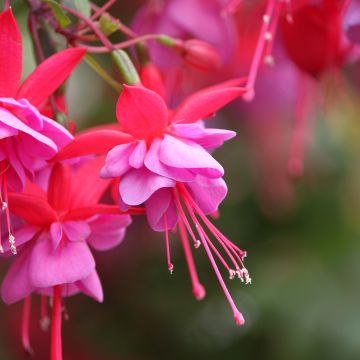
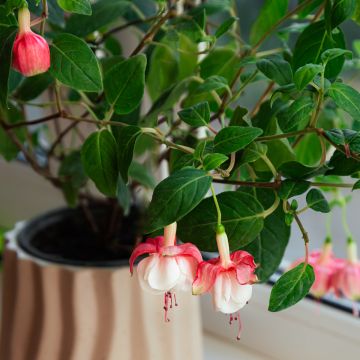
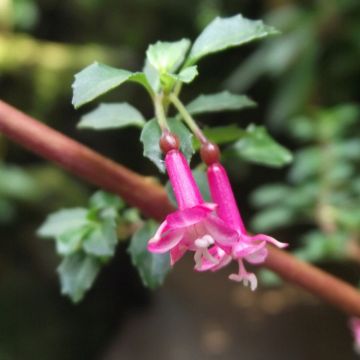
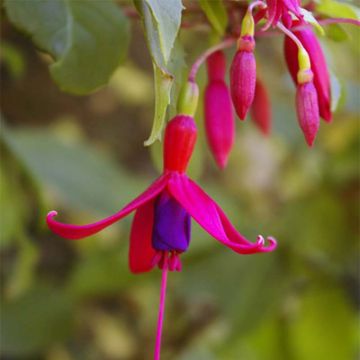

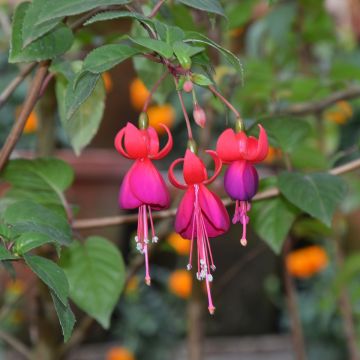
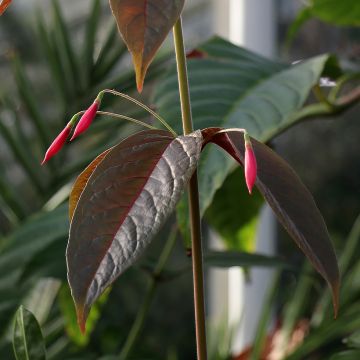
Comments